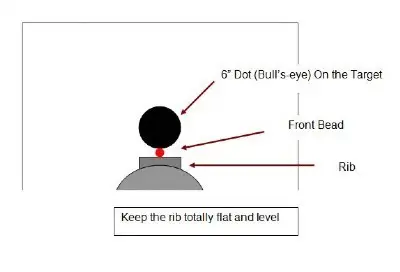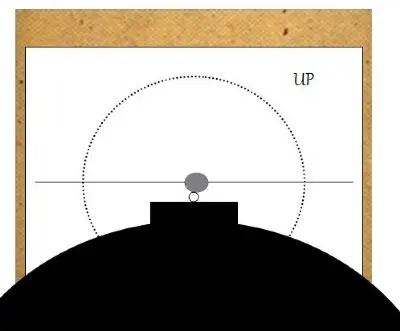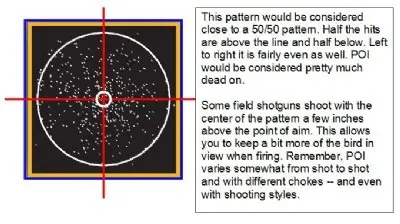How do I check for POI and pattern my shotgun?
It is not really that hard to do, but takes a bit of time. Here are a few general steps to follow. You can use these instructions for Point of Impact (especially helpful if you have a slug gun) and for general pattern performance. Patterning is very important with steel shot, which usually produces very different results than lead shot for each choke tube.
We often get asked about shotgun POI and about pattern performance. What should it be? The answer is: "it depends." Knowing what you want from your shotgun and its chokes is helpful. But knowing the actual performance of your current shotgun can be even more helpful. There are several basic things you can learn by patterning your shotgun -- in this case, a field gun:
- Pattern percentages
- Pattern density
- Point of Impact (POI) -- actually the center of the pattern.
This information is a compilation of the general ideas of patterning that many people use. You can find many resources online or in books covering the subject more extensively. This outline should get you started in your understanding. A quick Web search of "shotgun patterning" will find hundreds of sites that cover this information and can give you a more detailed view of why and how shotguns (and chokes) are patterned. Here is what you can do to get started:
1. Make sure your shooting range is safe and you are following all safety rules for the range and for your Shotgun (read your owner’s manual first). Wear ear and eye protection.
2. Get a big pattern board (probably 40-50 inches) to use for attaching your targets. Your targets will be a sheet of paper taped or stapled to the board. The backboard can be plywood or cardboard or even a stretch frame of your design. Set this up downrange. The correct distance from where you will be shooting is usually considered to be 40 yards (that is what the firearms companies usually shoot from). But ultimately you will test at the distance you shoot most of your game.
3. Attach the sheet of paper to the board. Banquet table paper, that comes in a roll, works great.
4. Put a six-inch dot in the center of the sheet of paper. It looks big up close, but it will be very small from 40 yards. To make sure you don’t get confused, draw a horizontal line from right to left through the circle and indicate “top” and “bottom” on the target.
5. Go back to your shooting position, 40 yards from the target, and get ready to shoot.
6. Line up very carefully with the 6” circle on your target resting on top of your front bead (see the picture). Be as precise as possible. You MUST keep your rib absolutely level front to rear. If you are seeing any rib other than a single flat surface it will make the results almost entirely useless (you will shoot too high). Keep your gun totally level too, from right to left. Canting your shotgun can affect the pattern position on the target. If you are shooting mostly for POI (center of pattern) use a tighter choke. It makes it easier to determine the center of your pattern.
The illustration above will help you line things up. But it will really look a lot more like this drawing below when you get set up at the right distance.
7. Shoot the target, then go up and take it down and put another sheet up. Shoot it again. Two times might be enough, but most experts recommend three or four times – each time on a clean sheet of paper. (When you are doing all this walking back and forth make sure you are following the rules of the range and all safety rules.)
8. After you have completed shooting take each target and place it on a table. Orient the target sheets top and bottom, then draw a circle using a pencil and either a 15” string, a tape measure or a yardstick: This will be a 30” circle around the densest part of the pattern. Just eyeball it. It will usually not be centered on the 6” target bull’s-eye (more on that later) but can be.
9. For pattern performance:
- Count the pellet holes inside the 30” circle you have drawn around the densest part of the pattern. Then, to calculate pattern percentage you will need to know how many pellets your shotshell contained. (You can find this online for most brands, or open a shell and count). Divide the pellet hits in the 30” circle by the total pellets in the shotshell. That is pattern percentage FOR THE CHOKE YOU USED. It will be different for different chokes. Compare the targets to get an average of your pattern performance with the same choke tube.
- You can also calculate a core density by drawing a 20” circle inside the 30” circle and dividing the number of pellets in the small circle by the total pellet count. Turkey hunters do this since heavy core densities can be very important when shooting a very small target, like a turkey’s head and neck. They often use smaller circles (and in competition, they often use a 4” square card at 100 feet).
- For POI, compare the center of the 6” target dot with the actual center of the pattern you shot. Determine the differences in elevation (up or down) and windage (right or left). Your pattern will usually be a bit higher than the center of the bull’s-eye. Average your first and second target for a more precision POI position.
So what does this all tell you?
- If you try patterning with various choke tubes that you use and pattern them at the distances you will be shooting, you can get a great idea of how many pellets will really be going toward your target and where they are going. You can also test different shot sizes. Different shot sizes WILL give different results. Buck Shot will NOT perform like a load of #9s. There are plenty of articles on choke tubes and which tubes are best for each distance and for which game.
- You will get a pretty good idea of POI (cener of pattern) with the test above. Shotguns from the factory vary significantly on POI. Some are 50/50: that is, half of your pattern will be above your point of aim (the bull’s-eye dot you shoot at) and half will be below. A good number of shotguns shoot 60/40 patterns (60% of the pattern above and 40% below the bull’s-eye). Many trap guns are even higher (trap shooters like to “float” the bird well above the front bead). A little right to left variation is extremely common, even with the most expensive guns, and often can vary with the choke tube you have used for the test.
- Always remember that you must do an average of patterns since shotgun patterns simply will not perform the same from shot to shot. But on average – as we all know – they usually perform just fine.
- Do some experimenting. When you know where your shotgun shoots it can make a huge difference in your shooting success. And patterning can reveal errors you make in the field, for example how lifting your head just a bit on the stock can raise POI above where you think you are aiming. In fact, it can make you miss entirely.
We hope these suggestions and ideas are helpful.
Links:
(Some of the above information was obtained from our friends at Winchester Repeating Arms and is used with their permission.)





